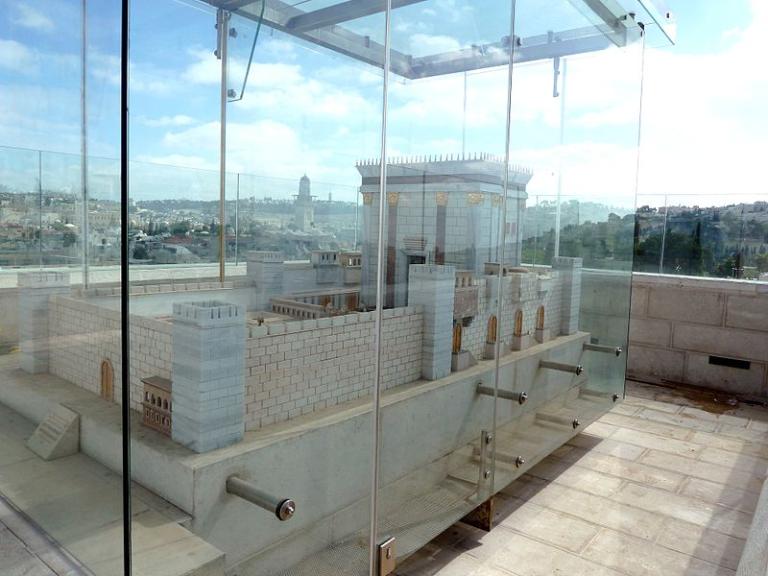
(Wikimedia commons public domain photograph)
First, a lengthy quotation from Haggai 1:1-11, in the New English Translation of the Bible, with one three-word explanatory interpolation from me:
On the first day of the sixth month of [the Persian Achaemenid] King Darius’ second year, the Lord’s message came through the prophet Haggai to Zerubbabel son of Shealtiel, governor of Judah, and to the high priest Joshua son of Jehozadak:
2 This is what the Lord of Heaven’s Armies has said: “These people have said, ‘The time for rebuilding the Lord’s temple has not yet come.’” 3 The Lord’s message came through the prophet Haggai as follows: 4 “Is it right for you to live in richly paneled houses while my temple is in ruins? 5 Here then, this is what the Lord of Heaven’s Armies has said: ‘Think carefully about what you are doing. 6 You have planted much, but have harvested little. You eat, but are never filled. You drink, but are still thirsty. You put on clothes, but are not warm. Those who earn wages end up with holes in their money bags.’”
7 Moreover, this is what the Lord of Heaven’s Armies has said: “Pay close attention to these things also. 8 Go up to the hill country and bring back timber to build the temple. Then I will be pleased and honored,” says the Lord. 9 “You expected a large harvest, but instead there was little. And when you would bring it home, I would blow it right away. Why?” asks the Lord of Heaven’s Armies. “Because my temple remains in ruins, thanks to each of you favoring his own house! 10 This is why the sky has held back its dew and the earth its produce. 11 Moreover, I have called for a drought that will affect the fields, the hill country, the grain, new wine, fresh olive oil, and everything that grows from the ground; it also will harm people, animals, and everything they produce.”
I now append notes taken from and/or inspired by a reading of Gordon Darnell Newby, A History of the Jews of Arabia: From Ancient Times to Their Eclipse under Islam (Columbia, SC: University of South Carolina Press, 1988), 18-19:
The Jewish communities of south Arabia had foundation legends associated with the destruction of . . . the First Temple. According to Yemenite legend, the original Jewish settlers had left Jerusalem forty-two years before the destruction of the Temple. When Ezra called on them to return from exile to help in the rebuilding of the Temple, they refused because they foresaw the second destruction of the Temple. This brought Ezra’s curse on them, condemning them to a life of poverty and intellectual privation. They, in turn, cursed Ezra so that he would not be interred in the Holy Land. (18-19)
Some explanation of the timeline here might be in order:
According to the Hebrew Bible or Old Testament, the First Temple — which is often referred as Solomon’s Temple — was the sacred structure in ancient Jerusalem that Solomon, the third (and last) king of united Israel, built around 1000 BC. That temple was destroyed by Nebuchadnezzar II, the king of Babylon, after his siege of Jerusalem in 587 BC. The destruction proper may have occurred in 586 BC.
If a group of Jews, concerned about the rising threat from Mesopotamia, really left Jerusalem for refuge in Yemen forty-two years before the destruction of the Temple of Solomon, that would put their departure at around 628-629 BC.
According to 1 Nephi 1 in the Book of Mormon, the prophet Lehi, concerned about the Babylonian threat and commanded by God, left Jerusalem around 600 BC. Is it possible that an awareness of a prior flight of Jewish refugees toward south Arabia was a factor in his decision to head out in the same direction that they had allegedly gone?
The so-called Second Temple was constructed after the return of many (but not all) Jews from their exile in Babylonia in 516 BC. It was originally a relatively modest structure built in their poverty by a number of returning Jewish exiles under Zerubbabel, a governor appointed by the Persian rulers of the Achaemenid Empire, which had recently overthrown the Neo-Babylonian or Second Babylonian Empire. It is the temple associated with Ezra, Nehemiah, and Haggai. (King Herod the Great completely reconstructed the Second Temple just before and during the childhood of Jesus, making it far more grandiose — and this is the temple, familiar from the New Testament, that was destroyed by the Romans in AD 70. Even after Herod’s expansion and improvements, it is still known as the “Second Temple.”
So far as I’m aware, there is no biblical account of Ezra unsuccessfully exhorting reluctant exiles to return and rebuild the temple. But (as shown in the quotation given above) the prophet Haggai certainly exhorted the Jewish returnees to greater efforts toward its reconstruction, and, according to Haggai 1:12-15, he did so successfully.
What of the supposed Jewish refugees in Yemen and their alleged refusal to return? G. D. Newby comments as follows:
It is difficult to ascertain the antiquity of this legend, although its grounding in Haggai would argue that the tension between the exiles and the forces of return was widespread and early. The folklorist Schwarzbaum assumes that the story is late, but other scholars, like B. Heller, argue for its antiquity. (19)
If the story is authentically ancient, it might shed some light on the context of Lehi’s journey to southern Arabia.











